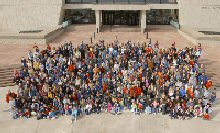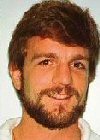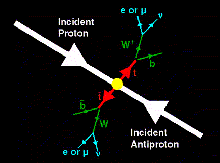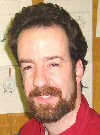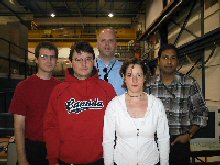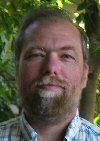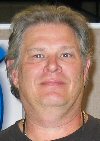 | Thursday, June 23, 2005 |
|
Thursday, June 23 2:30 p.m. Theoretical Physics Seminar - Curia II Speaker: A. Weiler, Technische Universitat, Munich Title: Impact of Extra-Dimensional Physics on Rare Kaon Decays 3:30 p.m. DIRECTOR'S COFFEE BREAK - 2nd Flr X-Over THERE WILL BE NO ACCELERATOR PHYSICS AND TECHNOLOGY SEMINAR TODAY
Friday, June 24
Saturday, June 25 |
|
Extended Forecast |
Secon Level 3 |
|
Thursday, June 23 Santa Fe Black Bean Soup Sloppy Joe $4.85 Tex-Mex Lasagna $3.75 Sauteed Liver and Onions $3.75 Baked Ham and Swiss on a Ciabatta Roll $4.85 California Pizza $3.00 Crispy Fried Chicken Ranch Salad $4.85 The Wilson Hall Cafe now accepts Visa, Master Card, Discover and American Express at Cash Register #1.
Wilson Hall Cafe Menu |
| Fermilab Today is online at: http://www.fnal.gov/today/ Send comments and suggestions to today@fnal.gov Fermilab Today archive Fermilab Today PDF Version Fermilab Result of the Week archive Fermilab Safety Tip of the Week archive Linear Collider News archive Fermilab Today classifieds Subscribe/Unsubscribe to |
|
Faces of DASTOW Will Set Enthusiastic Tone Today
| ||
| ||
DASTOW '05 gets rolling at 8:30 a.m. today with the group portrait on the front steps of
Wilson Hall, and Fermilab user Pierrick Hanlet of MINOS and the Illinois Institute of
Technology views this annual assemblage of young smiling faces as both genuine and encouraging.
A new parallel program will be underway in One West, designed for youngsters around middle school age. At 9 a.m., Don Lincoln of DZero illustrates physics principles of Forces and Motion. At 10 a.m., Debbie Harris of Particle Physics Division's new Neutrino Department discusses Physics in the Real World. At 11 a.m., Linda Valerio of Accelerator Division's Mechanical Support Department hosts a presentation on the Physics of Sports. And there's another new activity on tap: at 9 a.m., 10 a.m. or 11 a.m., you can meet guides at the Covered Wagon outside the Lederman Science Education Center for Pioneer Adventures on the Fermilab Prairie Trail. Following the group portrait at 8:30 a.m., there will be an assembly for all participants at 8:45 a.m. in Ramsey Auditorium to go over the schedule and safety guidelines. The events geared for younger kids will begin with The Cryo Show, with Jerry Zimmerman on stage at 9 a.m in Ramsey Auditorium. At 10 a.m., the bus will load at the front steps of Wilson Hall for the ride to the Fire Department, and from there on to the buffalo pasture at 11 a.m. Then it's back to Wilson Hall for a hot dog lunch (no signups required). After lunch, parents are free to have their children visit them at their workplace, always depending on permission on supervisors and careful attention to safety rules. Plan to have a fun day - and a safe one. Information and schedule --Mike Perricone |
|
Status Report by GDE Director Barry Barish |
|
Today, I want to briefly describe the process that led to choosing superconducting rf technology as the
basis of the main linac technology for the global design effort. As I discussed last week, a decade of
extensive R&D toward a linear collider demonstrated that it would be possible to build a linear collider
using either room temperature copper structures or using superconducting rf cavities.
Read more |
|
June 20 - June 22 - During this 48 hour period, Operations established one store that combined with an existing store provided approx. 40 hours and 13 minutes of luminosity to the experiments - CUB LCW pump failed - Mysterious "glitch" trips off TEL
Read the Current Accelerator Update |
|
From Interactions News Wire, June 20, 2005 G-Zero Finds that Ghostly Strange Quarks Influence Proton Structure In research performed at the Department of Energy's Jefferson Lab, nuclear physicists have found that strange quarks do contribute to the structure of the proton. This result indicates that, just as previous experiments have hinted, strange quarks in the proton's quark-gluon sea contribute to a proton's properties. The result comes from work performed by the G-Zero collaboration, an international group of 108 physicists from 19 institutions and was presented at a Jefferson Lab physics seminar June 17. Read more |
|
Observing the Top with Electrons and Muons | ||||
| ||||
|
The discovery of the top quark at Fermilab's Tevatron collider in
1995 by the CDF and DZero collaborations provided direct experimental
evidence for the three generation structure of the Standard Model.
Because of the small production rate of top-antitop pairs (about one
in a few billion proton-antiproton collisions), many properties of the
top quark have yet to be explored in detail. A precise measurement of
the top-antitop production rate in all its final states is a powerful
tool to test that the observed particle has indeed the properties
expected for the top quark.
| ||||
|
Thanks to the improved lepton identification capabilities of the DZero Run
II detector and the much larger datasets offered by the Run II of the
Tevatron, it is possible to observe unambiguously for the first time the
top quark in the rare dilepton final states. Within the precision of this
new measurement the production rate is in good agreement with both the
standard model and the production rate measured by DZero in the lepton+jet
final state. | ||||
| ||||
|
Result of the Week Archive | ||||
|
Tevatron Connection Save the date! The second annual Tevatron Connection will take place Friday and Saturday in Ramsey Auditorium, offering a series of CDF and DZero presentations with theoretical perspectives.
2-for-1 Tickets for Symmetry Premiere
|
